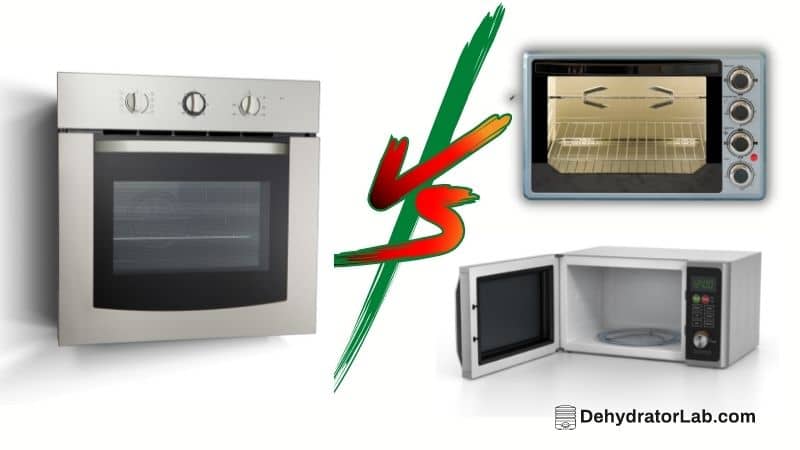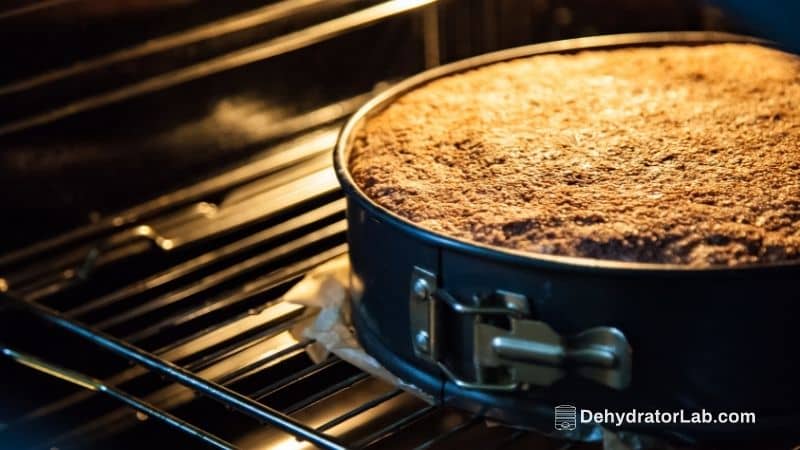In this article, we will touch on the differences and similarities of a convection vs conventional oven vs microwave oven. Read to learn and understand the functionalities, uses, benefits, and usability of the 3 main ovens that are widely used in modern kitchens.
The first ever version of ovens was discovered in Central Europe in the 29,000 BC. These were simple boiling and roasting pits erected inside yurts. These were replaced by the cast-iron stove in the 1700s, which were also later replaced by the coal oven in the 1900s.
The coal oven was cylindrical in shape and entirely made of heavy cast iron. Gas ovens came years later as a replacement of the coal ovens. The gas stoves were faster and more efficient than the coal ovens. They sold better and gained more popularity among most homes back then.
Unfortunately, gas ovens’ popularity was short-lived as a few years later. The electric ovens were invented followed by the microwave ovens.
The microwave ovens are up to date the most advanced and efficient means of cooking in modern homes.

In this article:
What Is A Convection Oven And How Does It Work?
A convection oven is a simple yet efficient fan-aided oven that aims to solve most cooking problems associated with ovens like uneven and hot spots cooking. It employs the convection mechanism to deliver faster and even cooking results. This oven has a fan inside that aids circulate the heated air steadily and evenly to the food being cooked.
Convection ovens naturally and seamlessly circulate heat by the aid of a powerful exhaust unit and a fan both of which work efficiently to optimize the cooking results. The fan works to prevent temperature irregularities and variations.
We discussed the best countertop convection ovens to buy in a previous article.
What Is A Conventional Oven And How It Works?
Conventional ovens are older versions of convection ovens. They are a bit slower and less efficient when compared to convection ovens. They work by generating radiant heat from the top or bottom chamber and spreading it over the food being cooked.
In other words, these ovens work by generating radiant heating energy and transmitting it by the aid of electromagnetic waves to heat and cook food. Due to the kind of heat waves these ovens produce, users tend to experience uneven cooking results.
What Is A Microwave Oven And How Does It Work?
A microwave is an electrically-powered oven that cooks food by introducing it to electromagnetic radiation that’s distributed within the frequency range of the microwave. The introduction of the electromagnetic radiation on the food presents polar molecules which in return rotates it to generate thermal energy through the dielectric heating method.
This powerful heating mechanism ensures food cooks faster and more efficiently. The food cooked is always uniform and homogeneous. It can be used to cook frozen foods, baking, heating refrigerated and canned foods, and steaming.
Conventional Oven vs Convection Oven vs Microwave Oven
These 3 cooking ovens function differently but serve the same role of fixing meals faster and more efficiently. They are different in design and erection but are all user-friendly and performance-oriented.
There are many other areas in which these ovens differ outlined below being the main ones.
1. Machine Configuration
We have already mentioned that none of the 3 ovens use similar operation mechanism.
While the convection oven works by evenly distributing heat by the aid of a fan to cook food, the conventional oven emits and distributes radiant heat via the aid of electromagnetic waves.
As for the microwave oven, it releases radio waves to heat and cooks food placed in ceramic or plastic containers.
2. Cooking Temperature
The standard cooking temperature in all the 3 ovens vary. Microwaves use radio waves to heat and cook food so they operate at extremely high temperatures. As for, convection ovens, they heat and cook food by evenly distributing heated air hence they operate at a bit lower temperature.
Conventional ovens just like microwaves heat food at a bit higher temperature when in comparison with convection ovens. Most recipes are designed to be cooked in conventional ovens so when cooking with a convection oven, you have to adjust the temperate to about 15 degrees lower.
3. Method Of Food Preparation
The biggest difference in these ovens is how they cook food. Convection ovens emit and circulate hot air around the food being cooked through a circulating fan whereas.
In the case of the microwave oven, radio waves or non-ionized radiation rays are passed around the food being cooked. As for conventional ovens, radiant heat energy is emitted and spread around the food via electromagnetic waves.
In convection ovens, the hot air is circulated evenly which allows for even and smooth cooking, crisping, and browning. This isn’t the case with microwave and conventional ovens as the radiant heat emitted from these units isn’t evenly distributed.
The air inside a microwave and conventional oven is usually at room temperature, which makes it almost impossible for the food being cooked to form a crust.
4. Cooking Time
Those in search of a unit that will allow them to cook faster and more efficiently should consider convection ovens. Convection units are highly recommended for household cooking as they are efficient, fast, and reliable.
Microwaves and conventional units aren’t a bad choice but cannot be relied on for fast and efficient cooking.
The Pros And Cons Of Each One
There are well-known pros and cons to each of the 3 cooking units. We are going to help you better understand how each of the ovens outlined above performs.
a) Convection Oven
Pros
- Heats and cooks the food evenly: Convection ovens distribute heat evenly. The built-in fan regulates the flow of hot air ensuring that the temperature circulated for cooking food is even.
- Cooks food faster: The built-in fan lets your food cook at lower and regulated temperatures. This ensures food will cook faster.
- Cooks more than one dish at once: The convection oven lets you prepare several dishes at once. Since heat and temperature are distributed evenly, you don’t need to worry about one of the dishes cooking faster than the other.
- High versatility: The fact that heat is distributed evenly means that you can place the dish containing the food being cooked anywhere in the oven.
Cons
- A bit more fragile: When compared to conventional ovens, convection units are a bit more fragile and will likely get damaged easier.
- Requires recipe adjustment: The instructions on most recipes are made for preparing food on traditional ovens so when cooking with a convection unit, you will need to adjust the cooking time and temperatures.
b) Microwave Oven
Pros
- User-friendly and resourceful: Microwaves have a user-friendly design and functions. It’s more about putting the food in the oven and adjusting the timer to your preferences.
- Fast and efficient cooking: Microwaves cook food faster than conventional units. They are, however, slower when in comparison with convection ovens.
- More hygienic and clean: Food cooked in microwaves is usually clean and hygienic.
- A bit more pocket-friendly: the cost of microwaves is lower than that of conventional units.
Cons
- Not ideal for cooking thick foods: While heat distribution is somehow even, microwave ovens aren’t ideal for cooking thick foods.
- Higher chances of mishaps: While cooking foods like eggs in a microwave, there are chances they will explode if you don’t have enough water.
c) Conventional Oven
Pros
- It’s multipurpose and versatile: A conventional oven can be used for grilling, cooking, baking, as well as toasting.
- Allows for easy temperature control: Conventional ovens let you adjust the cooking speed and temperature depending on the food being cooked.
- More advanced options cook evenly: Conventional units fitted with a fan lets you cook evenly.
Cons
- Uneven cooking: Conventional ovens lacking a fan cook unevenly.
- Takes long to prepare foods: Conventional ovens take more time to cook foods.
Conclusion
In the article above, we have highlighted the core differences, similarities, and functionalities of the convection oven vs. conventional oven and microwave oven. Each of the units has its own benefits and disadvantages.
We recommend convection oven for those searching for the best unit that will allow them to cook faster and evenly.
A conventional oven is best suited for those who want to easily roast, cook, and grill their foods.
As for microwave oven, we recommend it to those who want a cheap, user-friendly, and easily adjustable cooking unit.



